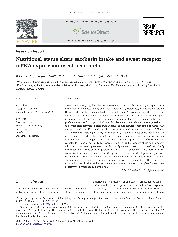摘要
Sweet taste usually signifies the presence of caloric food. It is commonly accepted that a close association exists among sweet taste perception, preference, and nutritional status. However, the mechanisms involved remain unknown. To investigate whether nutritional status affects the preference for palatable solutions and alters sweet taste receptor gene expression in rats, we measured saccharin intake and preference using a two-bottle preference test, and changes in body weight, plasma leptin levels, and gene expression for the sweet taste receptor in taste buds in high-fat diet-induced obese rats and chronically diet-restricted rats. We found that the consumption and preference ratios for 0.01 and 0.04 M saccharin were significantly lower in the high-fat diet-induced obese rats than in the normal diet rats, while the serum leptin levels were markedly increased in obese rats. Consistent with the changes in saccharin intake, the gene expression level of the sweet taste receptor T1R3 was significantly decreased in the high-fat diet-induced obese rats compared with the control rats. By contrast, the chronically diet-restricted rats showed remarkably enhanced consumption and preference for 0.04 M saccharin. The serum leptin concentration was decreased, and the gene expression of the leptin receptor was markedly increased in the taste buds. In conclusion, our results suggest that nutritional status alters saccharin preference and the expression of T1R3 in taste buds. These processes may be involved in the mechanisms underlying the modulation of peripheral sweet taste sensitivity, in which leptin plays a role.
- 出版日期2010-4-14
- 单位西安交通大学
